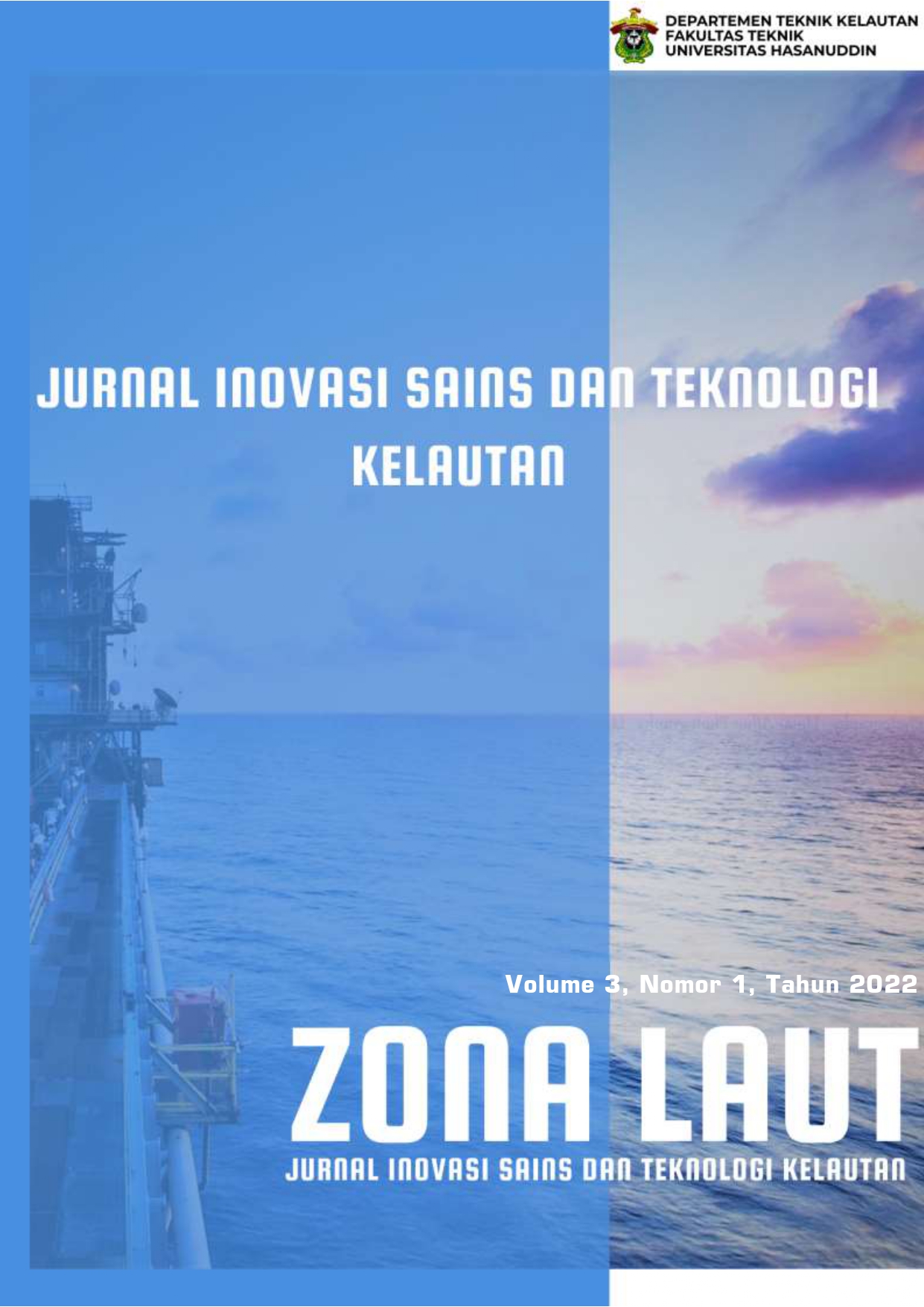Study of the Effect of Variations in Wave-Piercing Shapes on Barriers on Catamarans to Improve Fuel Efficiency
Main Article Content
Abstract
The main variable to increasing the ship's fuel efficiency is the ship's resistance generated by the hull shape. The calculation of ship resistance can be done with software. This study aims to determine the total resistance of the ship and estimate the fuel requirements of the catamaran. The catamaran hull design uses a symmetrical catamaran, the same design as the ship model of Jamaluddin et, al. (2012) in the towing tank test. The model obtained is then calculated for ship resistance and fuel requirements. The method of calculating ship resistance is using the Holtrop method. The results of the analysis of ship resistance are obtained from several variations of the wave-piercing model to get a lower resistance value so that more optimal fuel efficiency is achievable. Based on the analysis and calculations using CFD, from 3 variations of the wave-piercing shape, it shows a 6.1% reduction in resistance on the MV6 model with a variation of fn 0.19-0.65. The MV6 model is obtained the resistance value, the most efficient motor fuel consumption of other wave-piercing types.Roman
Downloads
Article Details

This work is licensed under a Creative Commons Attribution 4.0 International License.
Allow anyone to modify, improve, and make derivative works, even for commercial purposes, as long as they credit to you for the original work.
References
E. C. Rawson, K. J. and Tupper, Basic Ship Theory. 2001.
K. A. P. Utama and A. F. Molland, “Experimental and Numerical Investigations Into Catamaran Viscous Resistance,” FAST 2001 6th Int. Conf. Fast Sea Transp., no. September, 2001.
M. Bunari, “Studi Perbandingan Perencanaan Kapal Katamaran dan Monohull Sebagai Kapal Riset di Perairan Bengkalis Riau,” ITS, Surabaya., 2013.
P. Adi and Amiadji, “Analisa Penerapan Bulbous Bow pada Kapal Katamaran untuk Meningkatkan Efisiensi Pemakaian Bahan Bakar,” Pomits, vol. 3, no. 1, p. F-13-F-18, 2013.
F. Tuakia, “Dasar - Dasar Menggunakan CFD : Computational Fluid Dynamics,” Bandung Inform., 2008.
W. D. Jamaluddin, A., Utama, I. K. A. P. and Aryawan, “Experimental Investigation Into The Drag Interference of Symmetrical and Asymmetrical Staggered and Unstaggered Catamarans.,” J. Ocean Technol., 2012.
A. H. Ridho, E. Julianto, and I. P. A. Wibawa, “Studi Pengaruh Variasi Bentuk Wave-Piercing Terhadap Hambatan Pada High Speed Craft (Hsc) Berlambung Katamaran Dengan Simulasi Computational Fluid Dynamics (Cfd),” Proc. Conf. Mar. Eng. its Appl., vol. 3, no. 1, pp. 16–21, 2020.
A. H. Lillah, “Analisis Hambatan Penambahan Wave Piercing pada Kapal Katamaran Menggunakan CFD,” Surabaya Inst. Teknol. Sepuluh Nop., 2018.
CFX, “Ansys CFX Tutorials,” Ansys, 2006.
G. 077. AIAA, “Guide for The Verification and Validation of Computational Fluid Dynamics SImulations,” NPARC, 1998.
ITTC, “Practical Guidelines fo Ship Resistance CFD. Recommended Procedures and Guidelines,” p. (pp. 1-10)., 2014.
Harvard, “Resistance and Propulsion Ship,” p. 135, 1992.
S. A. Harvald, “Resistance and propulsion of Ship,” New York John Wiley Sons, 1972.
L. Cruise, “torqueedo Cruise 2.0 R,” 2014. .
A. Maruto Prijono, “Analisa Pengaruh Bulbous Bow Terhadap Tahanan Kapal.,” Proceeding 1st Conf. Mech. Eng. its Appl., 2019.
P. W. Putra, H. Poernomo, and B. D. Alfanda, “Analisis Pengaruh Bulbous Bow Tipe Δ , O , V Terhadap Tahanan Kapal , Konsumsi Bahan Bakar , Dan Rotasi Per Menit Motor Pada Kapal Dengan Lpp 160,7 M,” Proceeding3rd Conf. Mar. Eng. Its Appl., 2020.

